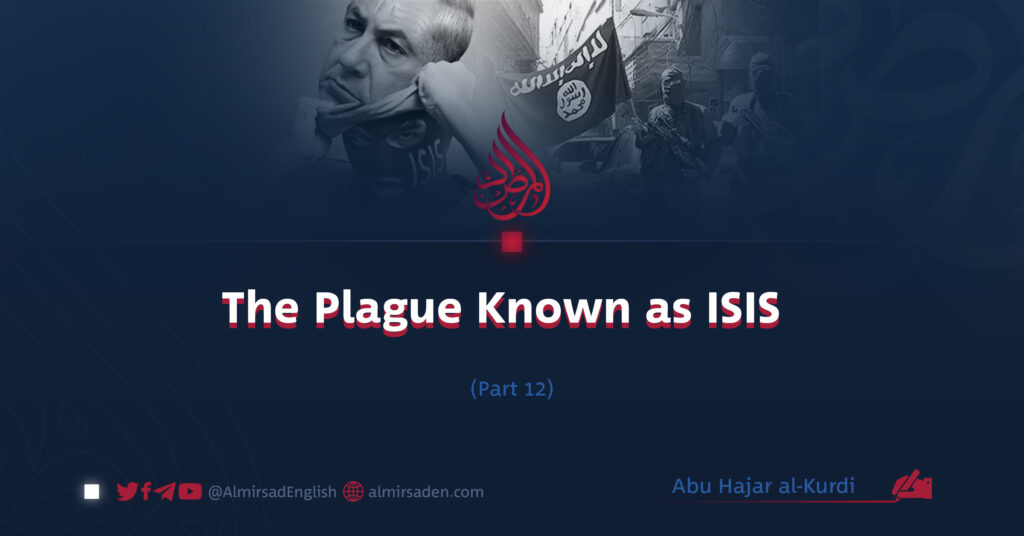Author: Abu Hajar al-Kurdi
Part 12
ISIS’s Infiltration of Yarmouk Camp and Their Crimes Against the Mujahideen of Ahl al-Sunnah
At the beginning of this series, I mentioned that ISIS was nothing less than a plague for the Mujahideen of Ahl al-Sunnah. Wherever the Mujahideen gained control, this cursed calamity would appear, striking the youth with daggers.
One of the areas they seized was Yarmouk Camp, a settlement for displaced Palestinians.
The Yarmouk Camp is located in the capital of Syria, Damascus, just a few kilometers from Bashar al-Assad’s palace. For a brief period, it was captured by the Mujahideen, which led ISIS to think of taking control of the area to both relieve Assad’s regime and protect itself from the nearby Mujahideen threat.
ISIS’s entry into Yarmouk in early 2015 marked a pivotal moment in the complex events of the Syrian Civil War. Originally established in the 1950s for Palestinian refugees, the camp had become one of the largest Palestinian-populated areas in Syria and played a significant role in the conflict.
The conditions in Yarmouk prior to ISIS’s arrival:
As the Syrian Civil War erupted in 2011, Yarmouk, due to its proximity to Damascus and dense populace, became a key location for various armed factions.
Initially, anti-Assad groups, including the Free Syrian Army and later Jabhat al-Nusra, took control of parts of the camp. During this time, the Syrian regime placed Yarmouk under a harsh siege, worsening the humanitarian situation. Residents faced severe shortages of food, medicine, and medical supplies.
ISIS’s entry into Yarmouk:
In April 2015, ISIS exploited internal conflicts among the Palestinian jihadist factions within the camp and successfully infiltrated the area.
Some reports suggested that ISIS entered Yarmouk in collaboration with the Aknaf Bait al-Maqdis group (a Palestinian faction associated with Hamas, critical of the Syrian regime). However, subsequent investigations refuted this claim as these factions later clashed with each other.
Some reports suggested that ISIS entered Yarmouk through collaboration with the Aknaf Bait al-Maqdis group (a Palestinian faction affiliated with Hamas, which opposed the Syrian regime). However, subsequent investigations refuted this claim as these factions later clashed with each other.
ISIS’s entry into Yarmouk was achieved through deception and betrayal against other jihadist groups.
ISIS’s objectives in Yarmouk:
1. Strategic control:
Yarmouk’s location near Damascus made it highly strategic. By seizing the camp, ISIS aimed to extend its influence around the Syrian capital and increase security for Assad’s regime.
2. Recruitment and weakening of the Mujahideen:
ISIS sought to recruit local youth to prevent them from joining other jihadist groups. This strategy was aimed at weakening the Mujahideen’s strength in the area.
3. Competition with other groups:
At the time, several anti-Assad groups, including Jabhat al-Nusra, were active in Yarmouk. ISIS’s goal was not just to capture new territory but to demonstrate its power over other jihadist and Islamist factions.
Despite committing numerous atrocities against the Mujahideen and seizing the camp, ISIS never attacked Assad’s forces. Their treachery was always directed at the Mujahideen.
4. Exploitation of the humanitarian crisis:
ISIS frequently exploited crises like sieges and famine to gain control of regions. In Yarmouk, the dire conditions created by the government’s long-standing siege provided ISIS with the opportunity to portray itself as a potential savior and solidify its influence.
Reactions and consequences:
ISIS’s entry into Yarmouk sparked fear and concern among the Palestinian residents and the international community. They quickly seized large portions of the camp and engaged in fierce battles with Palestinian armed groups and Jabhat al-Nusra. However, despite the ongoing siege, ISIS ultimately failed to gain full control of Yarmouk.
The presence of ISIS in Yarmouk lasted several months, causing immense suffering and destruction for the residents. Intense fighting and deteriorating humanitarian conditions forced many to flee the camp. Over time, ISIS’s control in the area weakened.
ISIS’s presence in Yarmouk served as an example of their tactics—using chaos and discontent in war-torn areas to seize strategic locations and exploit crises to expand their influence. Their ultimate goal was to control key positions and use the suffering of the people to their advantage.
